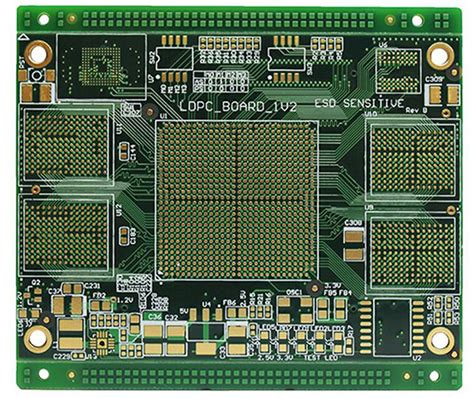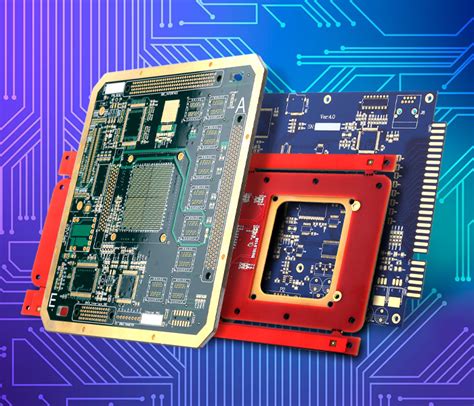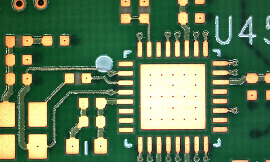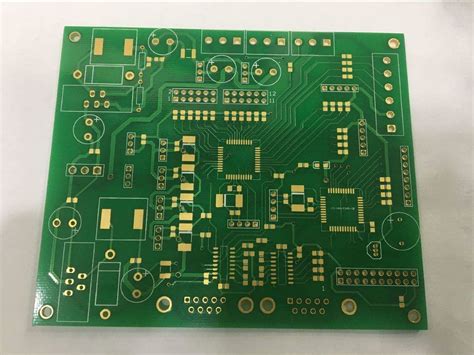Mastering BGA PCB Assembly: Techniques for Modern Electronics
Key Takeaways
Mastering BGA PCB assembly involves a comprehensive understanding of various factors that contribute to the efficiency and reliability of the final product. The foundational element starts with grasping BGA technology, particularly the Ball Grid Array design, which is recognized for its compact structure that allows for a higher density of connections on printed circuit boards. Utilizing the right tools is essential for effective pcba processes; specialized equipment such as reflow ovens and stencil printers can significantly enhance assembly accuracy. A meticulous, step-by-step approach to BGA placement techniques can prevent common errors that arise during assembly. Robust connections, which are critical for performance, can be ensured through proficient soldering methods tailored specifically for BGA technology.
Moreover, consistent inspection and testing are paramount in verifying the quality and performance of each assembly. Understanding and addressing common challenges in BGA PCB assembly, such as bridging or insufficient solder, can vastly improve outcomes. As industries evolve, it’s also important to stay informed about future trends shaping BGA technology, which will influence the development of next-generation electronic solutions. Lastly, adopting best practices in circuit design optimization when working with BGA assemblies ensures that products meet both technical requirements and market demands effectively.
Understanding BGA Technology: The Basics of Ball Grid Array
Ball Grid Array (BGA) has rapidly become a popular choice in PCB assembly, specifically in the realm of modern electronics. This innovative packaging technology allows for a higher density of connections between the integrated circuit and the printed circuit board (PCB), which is crucial for enhancing performance while minimizing size. In BGA technology, solder balls are arranged in a grid on the underside of the component, providing a stable and effective means of attachment to the PCB.
The primary advantage of BGA in pcba lies in its thermal and electrical performance. The use of solder balls minimizes stress during operation, thus providing a more durable connection compared to traditional surface-mounted devices. When exploring BGA, it is essential to consider factors such as die size, pitch, and solder ball composition, which all contribute significantly to the final assembly’s reliability and performance.
To understand BGA technology further, let’s break it down into key components as shown in Table 1 below:
| Component | Description |
|---|---|
| Solder Balls | Provide electrical connections while also aiding thermal dissipation. |
| Pitch | The distance between the centers of adjacent solder balls; critical for layout design. |
| Die Size | Affects how many connections can be made; larger dies enable more complex circuitry. |
As we delve into these fundamentals, it becomes clear that mastering BGA PCB assembly is indispensable for professionals aiming to optimize designs for modern electronics. Understanding these foundational elements will pave the way for more advanced techniques and methodologies that ensure high-quality assemblies and robust electronic devices.
Essential Tools for BGA PCB Assembly
In the realm of BGA PCB assembly, having the right tools at your disposal is crucial for achieving high-quality PCBA results. The foundation begins with precise solder paste applicators, which allow for uniform distribution of solder paste on the pads of the printed circuit board. Following this, pick-and-place machines are instrumental in accurately positioning the BGA components onto the PCBs, ensuring a reliable and efficient assembly process. Furthermore, a robust reflow oven is necessary, as it provides the controlled environment required to melt solder and form strong joints between the BGA balls and PCB pads.
In addition to these essential tools, inspection stations equipped with advanced techniques like automated optical inspection (AOI) promote quality assurance by identifying misalignments or defects in real time. Soldering tools such as hot air rework stations are also vital; they allow for repairs and modifications on complex assemblies without compromising surrounding components. Finally, investing in effective maintenance kits aids in prolonging the lifespan of these tools, ensuring each step of your PCB assembly process meets industry standards.
Emphasizing these tools not only enhances overall efficiency but also significantly impacts the performance of electronic devices built through this sophisticated process. With advancements in technology influencing tool design—such as improved precision and automation—staying updated on the latest developments is essential for any professional engaged in BGA PCB assembly.
Step-by-Step Guide to BGA Placement Techniques
When it comes to BGA (Ball Grid Array) pcb assembly, precision is key. Understanding the technique of placement can dramatically enhance the overall quality and reliability of your pcba. The first step in effective BGA placement is to ensure that the solder paste application is uniform and accurately placed on the pads. This is crucial as it lays the foundation for a strong connection.
Next, positioning the BGA component over the solder paste should be handled with care. An automatic pick-and-place machine can be particularly effective, as it ensures precise alignment with minimal manual intervention. The importance of alignment cannot be overstated; consider employing a reference point during placement for optimal accuracy.
Once positioned, it’s essential to verify that all balls are aligned correctly with their respective pads. An effective technique is the use of a microscope or vision system to inspect placement before proceeding to reflow. This step can help catch potential issues early, which can save significant time and resources later in the assembly process.
“Taking time at each step ensures you won’t face costly rework.”
After placement, a carefully controlled thermal profile during solder reflow will promote optimal soldering conditions for your pcb assembly. Following these structured steps will help ensure that your BGA components perform reliably in their intended applications, contributing significantly to the durability and efficiency of modern electronics. The right approach not only improves connection integrity but also enhances overall circuit design, making every assembly more robust and dependable. Remember, attention to detail in these stages lays the groundwork for successful pcba outcomes.
Soldering Methods for BGA: Ensuring Robust Connections
When it comes to BGA PCB assembly, the soldering methods employed play a crucial role in achieving robust connections. Among the most widely used techniques are reflow soldering and wave soldering. Reflow soldering is particularly effective for ball grid array (BGA) components, as it ensures that the solder balls melt uniformly, allowing for a strong bond between the BGA and the printed circuit board (PCB). The process involves applying a solder paste to the pads of the PCB, placing the BGA component on top, and then heating it in an oven to facilitate melting. The temperature profile must be meticulously controlled to avoid any defects such as cold joints or insufficient wetting.
On the other hand, wave soldering can be utilized during mass production when working with pcba that includes both through-hole and surface mount components. This method relies on a continuous wave of molten solder that flows over the PCB, creating connections through contact with exposed leads. Although effective, it’s less common for BGA due to the shortcomings in achieving consistent reliability for such packages.
To ensure optimal performance in modern electronics, it’s vital to consider not only the type of solder but also factors like flux selection and PCB surface finish. The right flux can enhance wetting properties, ultimately resulting in stronger joints. With continued advancements in technology, understanding these intricacies becomes paramount for engineers striving for excellence in BGA PCB assembly. Regular inspection following assembly is also critical to identify any potential defects early on; this can include X-ray inspection techniques specifically tailored for verifying BGA connections.
In summary, mastering these soldering methods is essential for professionals engaged in circuit design and assembly processes, particularly when looking to optimize system performance through reliable electrical connections.
Inspection and Testing: Verifying BGA Quality and Performance
In the realm of BGA PCB assembly, inspection and testing are vital components to ensure the reliability and performance of assemblies. The complexity of the ball grid array necessitates rigorous assessment methods to catch any potential defects early in the process. Various techniques, such as X-ray inspection and automated optical inspection (AOI), are employed to assess the quality of connections and solder joints. These methods provide a thorough evaluation by detecting voids, misalignments, or insufficient solder — common concerns in pcba that could compromise functionality.
Additionally, performing electrical testing, including in-circuit testing (ICT) and functional testing, is crucial to verify that each component operates as intended within the circuit design. The integration of these testing methods into the workflow not only enhances the reliability of BGA assemblies, but also reduces potential failures down the line. As techniques evolve, staying abreast of the latest advancements in inspection technology can make a significant difference in achieving optimal results in modern electronics. Ultimately, a robust approach to quality verification strengthens confidence in the longevity and efficiency of BGA PCB assemblies.
Common Challenges in BGA PCB Assembly and How to Overcome Them
BGA PCB assembly presents a unique set of challenges that can impact the overall quality and reliability of the final product. One common issue is achieving proper alignment during placement; misalignment can lead to poor connections, ultimately affecting functionality. To mitigate this, utilizing advanced placement techniques and automated assembly systems can enhance precision. Another challenge arises from soldering methods, where insufficient solder can result in weak joints and shorts between the balls. Implementing controlled thermal profiles for solder reflow can help ensure robust connections. Inspection processes also play a crucial role in verifying PCB assembly quality; optical and X-ray inspection techniques are vital for detecting hidden defects that may not be visible to the naked eye. Additionally, thermal expansion mismatches between materials during operation can lead to mechanical stresses. Selecting materials with compatible coefficients of thermal expansion (CTE) is imperative for durability. Overall, by recognizing these hurdles and employing strategic solutions, manufacturers can achieve effective PCBA outcomes and enhance the performance of BGA assemblies in modern electronics.
Future Trends in BGA Technology for Modern Electronics
As the electronics industry continues to evolve, BGA PCB assembly is poised for significant advancements that promise enhanced performance and reliability. One key trend is miniaturization; manufacturers are increasingly adopting smaller ball grid array (BGA) packages that allow for more compact and efficient designs. This change not only addresses the space constraints found in modern electronic devices but also supports higher circuit density, which is essential for achieving optimal performance. Furthermore, advancements in materials are paving the way for more robust pcb assemblies. New solder materials and fluxes that resist oxidation help improve connection reliability, particularly in environments subject to thermal stress. Additionally, automation in the assembly process is becoming prevalent, where sophisticated machines ensure precise placement and soldering of BGAs. This leads to improved quality control and reduced human error during the pcba process. The growing importance of sustainability is also influencing trends, prompting manufacturers to seek eco-friendly materials and methodologies in their pcb assembly practices. By staying abreast of these trends, professionals can enhance their skills and strategy for implementing BGA technology effectively within their designs.
Best Practices for Optimizing Circuit Designs with BGA Assemblies
When integrating BGA (Ball Grid Array) components into your pcb assembly process, it’s essential to employ best practices that enhance the overall performance and reliability of your circuit designs. One critical aspect is to ensure optimal placement of the BGA components; improper alignment may lead to significant issues during soldering and functionality. Utilizing advanced pcb assembly tools such as automated pick-and-place machines can greatly improve precision and efficiency. Additionally, maintaining appropriate thermal profiles during the soldering process is vital. This ensures that the solder balls melt uniformly, creating strong and reliable connections between the BGA and the printed circuit board (PCB). Regularly inspecting solder joints is another key practice; employing techniques such as X-ray inspection can aid in identifying hidden defects that may compromise performance. Moreover, considering the electrical characteristics and thermal management of your design will lead to improved reliability in various operational conditions. Lastly, thorough documentation of these practices can facilitate knowledge sharing and continuous improvement among team members, ultimately enhancing your proficiency in pcb assembly processes. By adhering to these best practices, engineers can optimize their circuit designs for enhanced functionality, longevity, and adaptability in modern electronic applications.
Conclusion
In mastering BGA PCB assembly, it is crucial to appreciate the intricate balance between technology and technique. The effective execution of pcb assembly processes plays a critical role in ensuring the overall quality and performance of electronic devices. As we have explored throughout this article, the journey of building a reliable pcba involves understanding the essentials of ball grid array technology, utilizing precision tools, and implementing robust soldering methods. To enhance performance, attention to detail during the inspection and testing phases cannot be overstated; this is where any potential flaws can be identified and rectified before the final product is put to use. Navigating through common challenges requires not only knowledge but also adaptability to emerging trends in BGA technology. Striving for optimized circuit designs is not just about maintaining efficiency but also about embracing best practices that enhance product longevity and reliability in modern electronics. Therefore, as we conclude our exploration, it becomes evident that continual learning and adaptation are vital for anyone involved in BGA PCB assembly.
FAQs
What is BGA PCB assembly?
BGA PCB assembly refers to the process of mounting and soldering Ball Grid Array (BGA) packages onto a printed circuit board (PCB). This method is known for its high density and excellent thermal performance, making it suitable for modern electronics.
What are the advantages of using BGA in PCBA?
The main advantages of using BGA in PCBA include improved electrical performance, reduced footprint on the PCB, and enhanced reliability. The design allows for better heat dissipation, which is crucial for high-performance applications.
What tools are essential for BGA PCB assembly?
Key tools for BGA PCB assembly include a reflow oven or hot air rework station, stencil printers for applying solder paste, and inspection systems to verify solder connections. These tools are essential to ensure precision and quality in the assembly process.
How do I ensure robust solder connections when working with BGAs?
To ensure robust solder connections when working with BGAs, it is important to use proper soldering techniques, such as reflow soldering, and to carefully manage the heating profiles. Implementing rigorous inspection methods will also help identify potential issues early.
What common challenges might I face during BGA PCB assembly?
Common challenges include misalignment of components during placement, insufficient solder volume, and difficulties in inspection due to hidden joints. Understanding these challenges helps in preparing targeted solutions to avoid issues throughout the assembly process.
Where can I learn more about optimizing circuit designs with BGAs?
For more information on optimizing your circuit designs using BGA technology and improving your pcb assembly, please click here: Andwin PCB Assembly.







